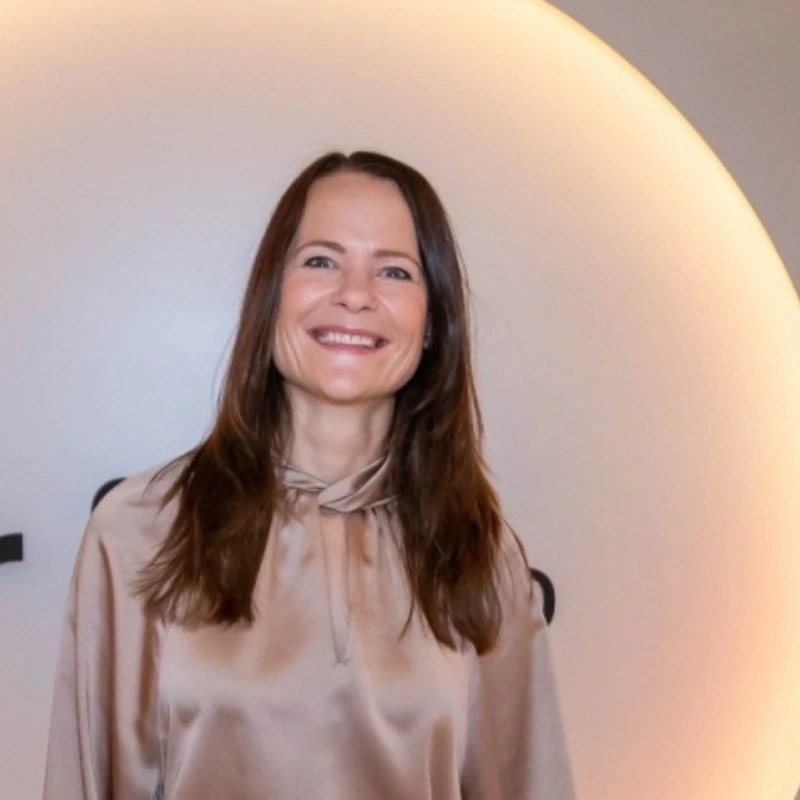Investment policy
Vive's investment beliefs
Vive wants you to achieve your goals through your investments. The investments and investment portfolios serve to realize your financial goals. Vive's asset management for private clients ensures the desired investments with an efficient balance between return and risk, at low costs, in a transparent manner and taking into account widely accepted ESG criteria (i.e. in the areas of living environment, social relations and good corporate governance).
Sustainability policy
At Vive, investing goes beyond just financial aspects. Vive includes sustainability criteria in its selection policy. In doing so, Vive strives to select investment funds and managers that excel in the field of sustainability within their category. Sustainability is approached from two sides.
Sustainability risks (outside-in): Vive analyzes sustainability risks related to the environment, society and governance (ESG) that can influence investments. We include these in our investment process to make better choices and strengthen our portfolios.
Sustainability impact (inside-out): Vive does not have a sustainable investment objective but promotes social characteristics through its selection policy. Vive does this on the basis of the frameworks from the Sustainable Finance Disclosure Regulation (SFDR), the European legislation that promotes transparency around sustainability.
Vive selects investment funds based on a selection policy that takes sustainable characteristics into account, with the aim of achieving a balanced risk-return ratio. The selection criteria based on sustainability are based on the following principles:
1. Exclusion policy
Vive only invests in funds that exclude investments based on a structured policy, where possible within the investment category.
2. Best-in-Class Selection
We only select funds that excel in sustainability:
- At least an MSCI ESG rating of BBB, to limit sustainability risks.
- At least an SFDR Article 8 classification (preference for Article 9).
This requirement is not automatically applied to government bonds.
3. Voting Rights and Engagement
For equity funds, we only invest in funds that actively use their voting rights and encourage companies to adopt more sustainable behavior.
4. Social Characteristics
Vive promotes social values such as:
- No investments in controversial weapons.
- Restriction of investments in the tobacco industry.
- Respect for human rights, labor rights and the fight against corruption according to the UN Global Compact.
With this policy, we ensure that our investments are not only financially strong but also contribute to social and sustainable goals, in line with changing laws and regulations. See the Vive Sustainability Policy and the SFDR documents for more information.
Keeping risk diversification high and costs low is important
Vive believes that investing is best done through broadly diversified portfolios. Vive strives to diversify as much as possible across investment categories, and within them across geographic regions and sectors. Avoidable risk that is not rewarded with a positive expected risk premium (excess return above the risk-free rate) should in principle be avoided.
Vive does not believe that market timing and tactical asset allocation add value to the customer after deduction of costs. Vive does not believe that trying to beat the market structurally adds value for the customer after deduction of costs. With active management, it is very difficult to do better than the market average. Therefore, the policy is to select funds on the basis of 'passive where possible'. Vive believes that active management makes sense for less efficient or inefficient markets if it leads to better risk management. Vive's focus within portfolio management is on compiling portfolios per risk level as well as possible based on realistic and plausible (long-term) economic scenarios. The investment horizon of customers ranges from short to long term. With the help of outsourcing to external asset managers, i.e. the suppliers of non-listed investment funds in which Vive invests for its customers, Vive can focus on the added value for you as a customer. Vive can select the investment funds itself. Vive only invests via non-listed UCITS in the selected investment categories.
Focus on risk management
Risk management is crucial for sustainable asset management. This means that risk is frequently measured and the portfolio is adjusted if necessary. Vive operates on the principle that the value of the downside risk of the optimal portfolios is updated every quarter and that the composition of the optimal portfolios can be adjusted in conjunction with this in order to achieve the best ratio between expected return and downside risk. To ensure that clients' investment plans remain close to the intended risk profile, Vive monitors your investment portfolios daily and applies rebalancing of the portfolios if they deviate too much from that risk profile. The actual composition is then brought in line with the strategic portfolio belonging to the investment plan at the time of rebalancing.
In which investment categories is the money invested?
The investment categories that qualify for the optimal portfolio must have a positive expected risk premium that is scientifically substantiated.
Vive can fill the portfolios with the following investment categories based on the investment beliefs:
- Money market investments in euros;
- Government bonds in euros or hedged to the euro;
- Investment Grade corporate bonds in euros or hedged to the euro;
- Equities worldwide, in mature markets and emerging markets;
- High Yield corporate loans, i.e. corporate loans with a lower credit quality than Investment Grade class.
Vive determines a representative index series for each category, which is used to determine the statistical characteristics in the Economic Scenario Generator model of Vive Technology. These characteristics determine the degree of risk diversification across categories.
How does Vive select the funds for each asset class?
Vive offers asset management through investments in unlisted investment funds ('funds'). Vive does not invest in its own funds but uses third-party funds; this prevents undesirable conflicts of interest.
Vive selects third-party funds based on the following criteria:
Liquid: The portfolio is set up with non-listed open-end investment funds that are tradable daily.
High degree of risk diversification: There is a broad diversification within the fund: there are sufficient names in each investment fund and care is taken to ensure that no individual investment has too large an allocation within the fund, both in terms of weighting in euros and in terms of risk weighting. This is tested by applying a 5% worst case scenario to the two largest positions in the portfolio and checking whether it exceeds the Value at Risk of the relevant investment category. If exceeded, the fund does not meet the risk diversification criterion and is not eligible for selection.
Low costs: The Ongoing Charges Factor (OCF) must be low. This is tested by comparing the OCF of a fund to be selected with the median OCF of comparable funds. The amount of any entry or exit fee must be in line with the market.
Sustainability criteria: Vive only invests in funds that meet our sustainability criteria (see above for more information).
Appropriate mandate of the instrument: The fund's benchmark is reasonably consistent with the representative index series on which the statistical characteristics are based; the tracking error between the two indices is expected to be no more than 1%. This concerns two index series. The index series on which the statistical characteristics are based refers to the index series used to determine the parameters in the Economic Scenario Generator model. The other index series, from the benchmark, concerns the fund's benchmark. The investment universe and risk limitations contribute to sufficient risk diversification. In the case of an index tracker, the replication method ensures a good connection to the benchmark (for example, full replication). The fund's management style is passive and responsible where possible.
Good quality asset manager: The asset manager has a proven track record (i.e. has demonstrated that the asset management in the relevant asset class is carried out reliably), has its own risk management in order and has a stable organization. Vive specifically sets an AFM registration of the fund manager and the fund as a criterion. In addition, the fund must have a reliable custodian.
Suitable and permitted for retail investors within the European Union: The fund has UCITS status and the Key Investor Information Document (KIID) is available for the fund in English and in the language of the country where Vive offers the app. This means that the KIID is available in Dutch for the funds used for customers in the Netherlands.
Funds with securities lending and unnecessary use of derivatives should be avoided: Vive has a strong preference for funds without securities lending and without the use of derivatives (such as total return swaps). Vive considers adding counterparty risk by lending securities undesirable, as this is not a transparent source of risk for the customer. The use of derivatives in a fund entails additional risks that cannot be clearly understood by non-professional investors. If a fund without securities lending or derivative use is not available for a specific investment category, but the improvement in the risk-return ratio for Vive's clients is significant, Vive may still consider adding this fund. In that case, it will be specifically recorded and communicated to clients in what way the Vive principle for securities lending and derivatives is deviated from, and why Vive considers it in the interest of clients that the fund in question can be part of client portfolios. Excluded are funds that use so-called exotics (custom derivatives).
How are investment plans created?
Vive helps clients set investment goals based on preferences that clients specify and within the client's risk tolerance profile based on the risk acceptance indicated by the client. An optimal investment strategy is then derived for each target plan via a software-based procedure. This strategy is a so-called lifecycle strategy: the 'investment risk decreases as the end date approaches'.
Vive determines an optimal investment portfolio within the client's risk profile. Vive ensures portfolio optimization and rebalancing after adjusting the risk-return characteristics of the underlying investment categories. The optimal portfolios and forecasts for the median scenario and the worst-case scenario are based on an economic scenario set that is generated quarterly by the Economic Scenario Generator model.
The investment plans are implemented by investing, for each investment plan, in an optimal portfolio belonging to the risk level that the client has accepted when drawing up the plan (or the last revision of the plan). Vive uses the same consistent portfolio optimization to fill in the investment mix in the different types of investment plans.
The portfolio optimization with the eligible investment categories is done by selecting the portfolio with the highest expected return (median scenario) at each desired Value-at-Risk (VaR) level, based on a realistic 1-year scenario. Vive uses a robust optimization technique to minimize the impact of extreme deviations. The VaR level is determined as the 5% percentile of the probability distribution of portfolio returns.
Part of Vive's services is rebalancing the portfolios in the investment plans created by the customer. Differences between the actual portfolio and the strategic portfolio for the customer's investment plan can arise due to price developments and changes in the strategic portfolio. The aim of rebalancing is to align the actual portfolio with the strategic portfolio that belongs to the specific investment plan at that time.

maak een afspraak
Klaar voor een moderne oplossing voor pensioen of vermogen? Maak vrijblijvend kennis met Vive en ontdek wat kan - voor jouw organisatie.
Complex pensioen, simpel uitgelegd - weet direct waar je staat
Persoonlijk gesprek voor jouw situatie en die van je werkenemers
In 30 minuten meer duidelijkheid dan uren googlen
Alle ruimte voor vragen aan onze ervaren pensioenexperts








